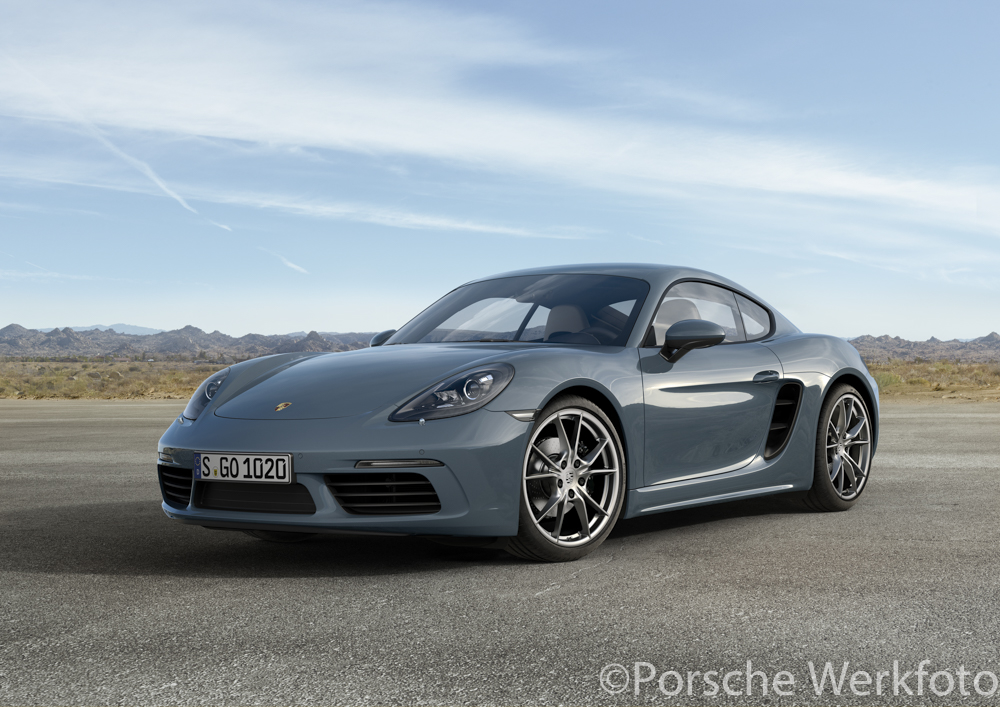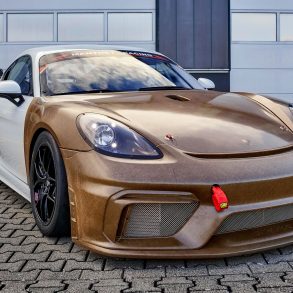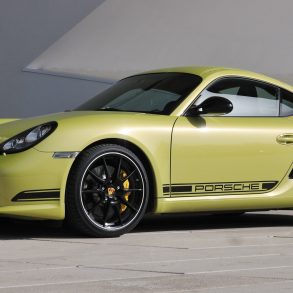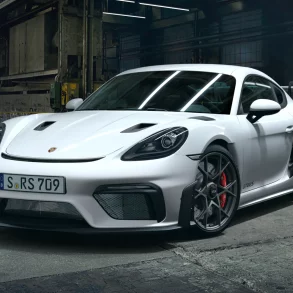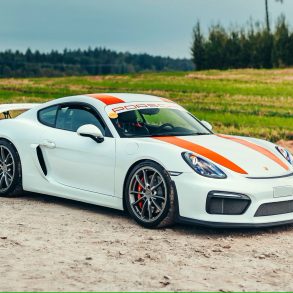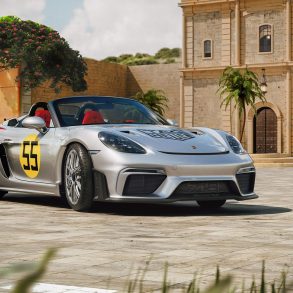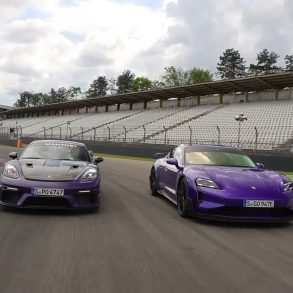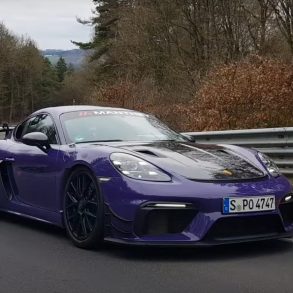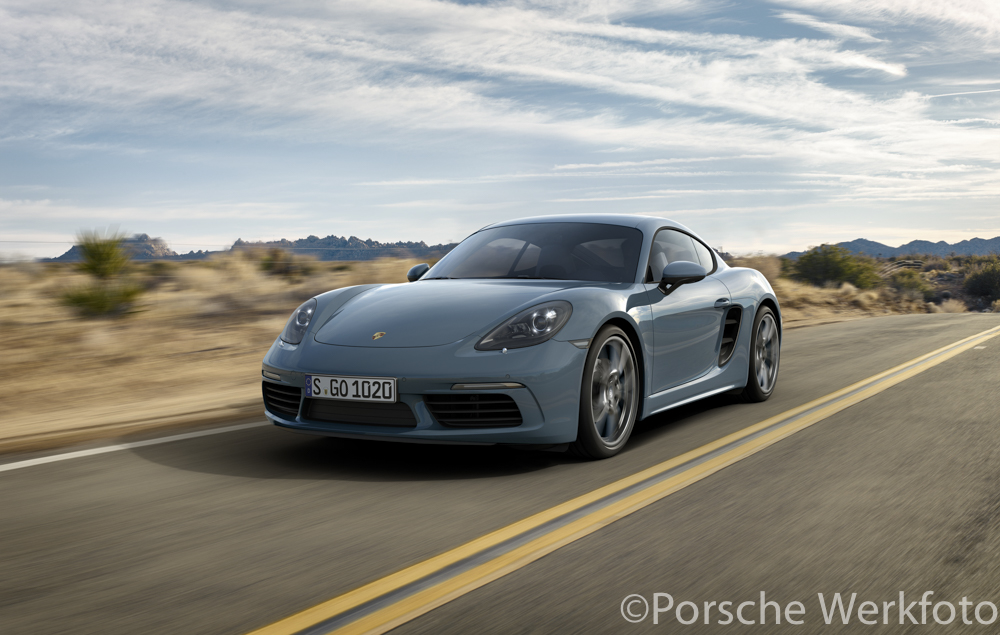
So you think the Cayman is just a Boxster with a roof. Well, perhaps technically it is, but the two models are distinct in their appeal and in the way they deliver their excitement. If the open-top, wind in your hair thing is for you, then the Boxster will no doubt be on your shopping list. Although it wears the 718 moniker, the new Cayman has the looks of the 1953 Porsche 550-1500 S and if that ticks your box, then the 718 Cayman is probably the model for you.
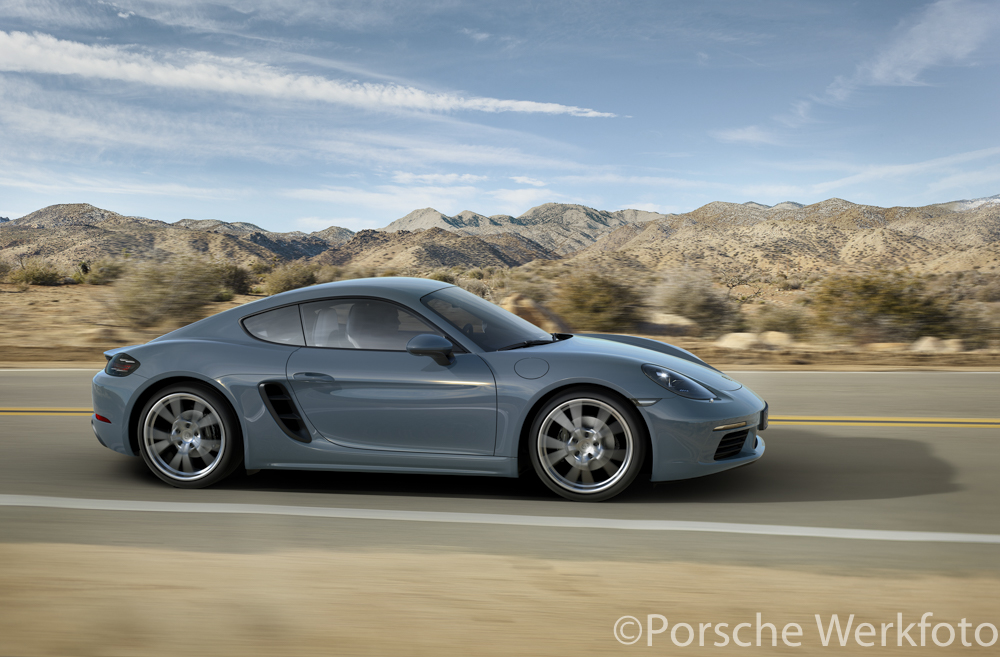
In Porsche’s quest to downsize its engines while still providing more power than the model it replaces, the 718 Cayman comes closest to its ancestral roots found in the 550-1500 S in that it too is driven by a 4-cylinder engine. True, the throaty sound of the 2.7-litre six-pot boxer engine of the outgoing model was, and still is, a true classic sports car sound. But get used to it, Porsche engines are getting smaller while their vast experience in turbocharging is being brought to bear.
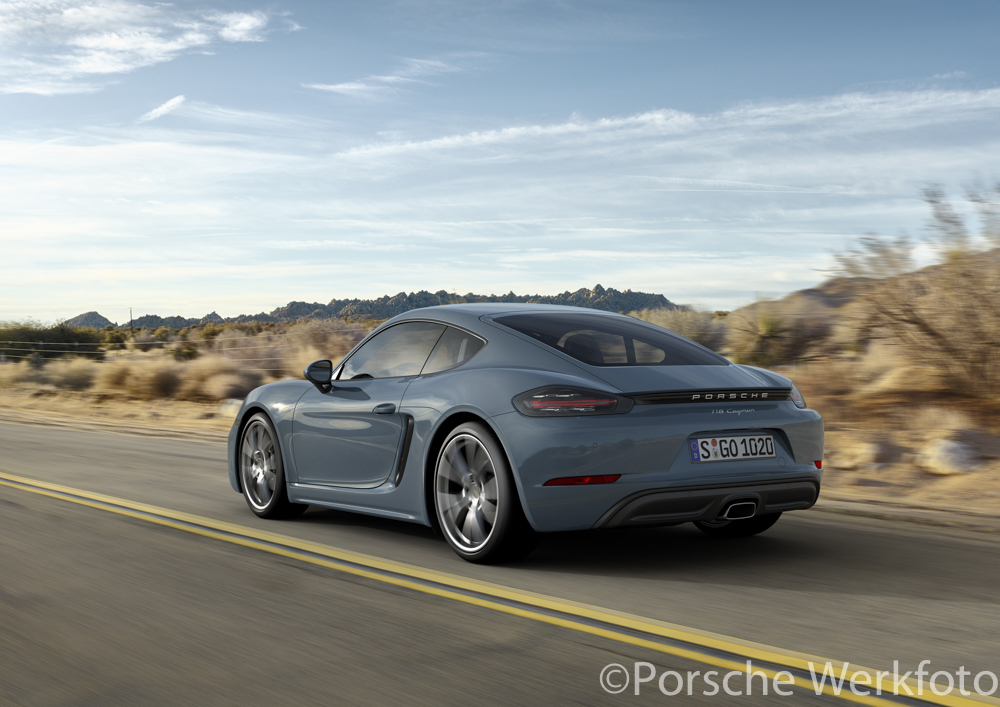
The new 718 Cayman is the fourth generation of this entry-level model, and is powered by the same 2-litre or 2.5-litre engine that powers the 718 Boxster and Boxster S models. As a result, the power output and performance figures mirror its topless sibling. The 2-litre flat 4-cylinder engine develops 300hp (220kW) while the S model delivers 350hp (257kW) from its 2.5-litre displacement engine. This represents an increase of 25hp (18kW) over its predecessor. The tremendous torque of the new engines in the 718 Cayman promises a greater driving experience even at low revs. The 2-litre engine of the 718 Cayman achieves a torque of up to 380Nm which is available between 1950 rpm and 4500 rpm. The 2.5-litre engine of the 718 Cayman S features a turbocharger with variable turbine geometry (VTG), a technology previously only available in the 911 Turbo.
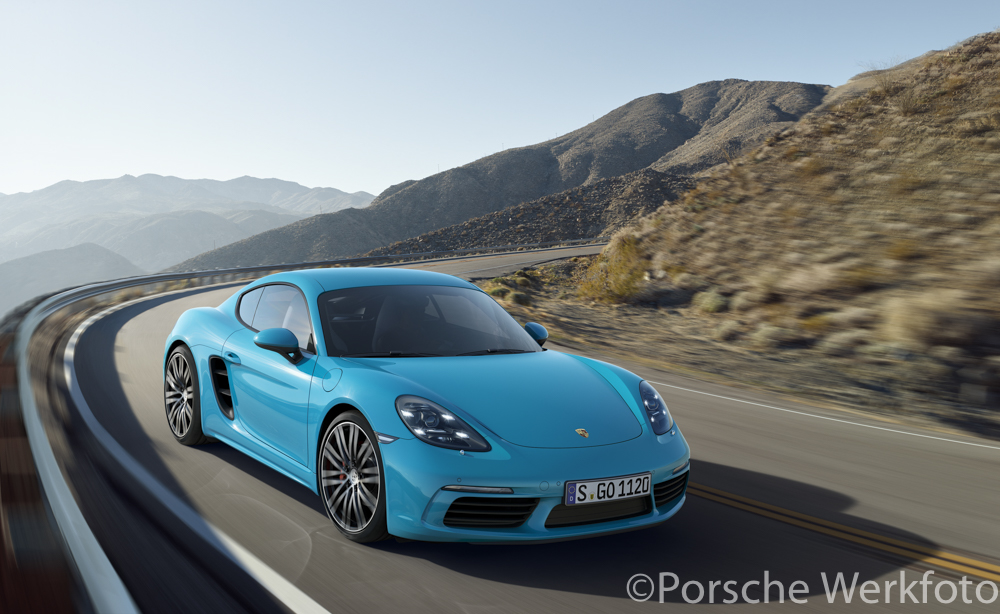
Fitted with PDK and optional Sport Chrono Package, the 718 Cayman will sprint from zero to 62mph (100km/h) in 4.7 seconds, while the S model will take just 4.2 seconds to reach this speed. The top speed of the 718 Cayman is 275km/h, and the 718 Cayman S can reach a speed of 285km/h.
The 718 race cars of the 1950/1960s were known for their agility and speed, earning them the nickname of ‘giant killers’. In the same way, the lateral rigidity and wheel tracking of the 718 Cayman have been improved thanks to a completely retuned chassis. Springs, stabilisers and shock absorbers are firmer and the rear wheels, which are a half inch wider, give increased lateral force potential and hence greater cornering stability. The optional Sport Chrono Package and Porsche Torque Vectoring (PTV) allow the sporty character of the 718 Cayman to be customised to suit the owner’s driving style. Also available as an option on the 718 Cayman is PASM with a ten-millimetre lowering of the ride height. In the S model, PASM sport suspension offers a 20-millimetre lowering of the ride height for the first time.
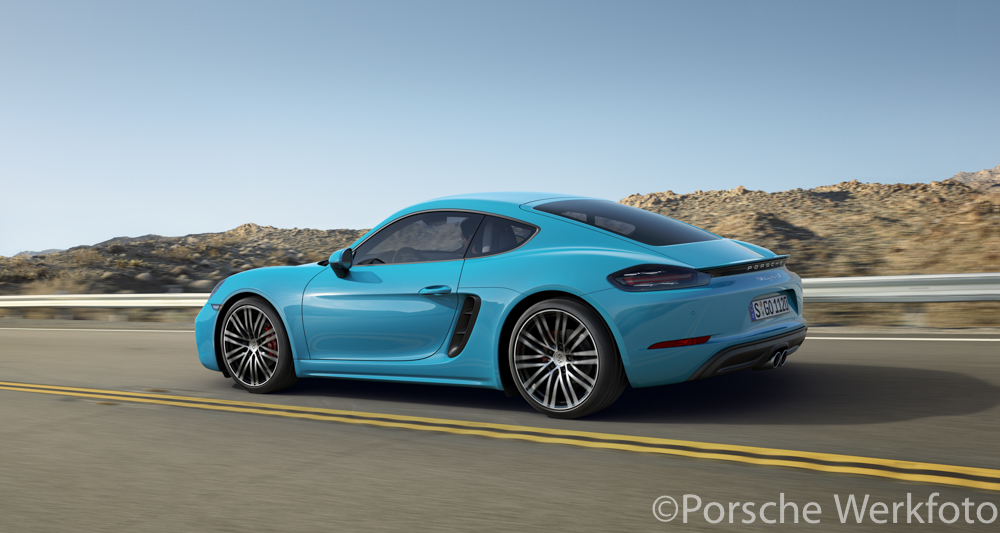
On account of the 718 Cayman’s greater driving performance capabilities, increased stopping power is required. The brake system previously used in the Cayman S is now used in the 718 Cayman with 330mm brake discs in front and 299mm discs at the rear. The 718 Cayman S, on the other hand, uses the four-piston callipers of the 911 Carrera combined with six-millimetre thicker brake discs.
Visually, the 718 Cayman has been given sharper and more prominent front air intakes, with more taut proportions and redesigned side air intakes. The slim front lights above the air intakes, which contain the parking lights and indicators, further reinforce the wider and more masculine appearance. Bi-xenon headlights feature a new design with integrated LED daytime running lights. The redesigned rear has a much wider look and the tail lights have been completely redesigned and are distinguished by the three-dimensional technology and four brake spots.
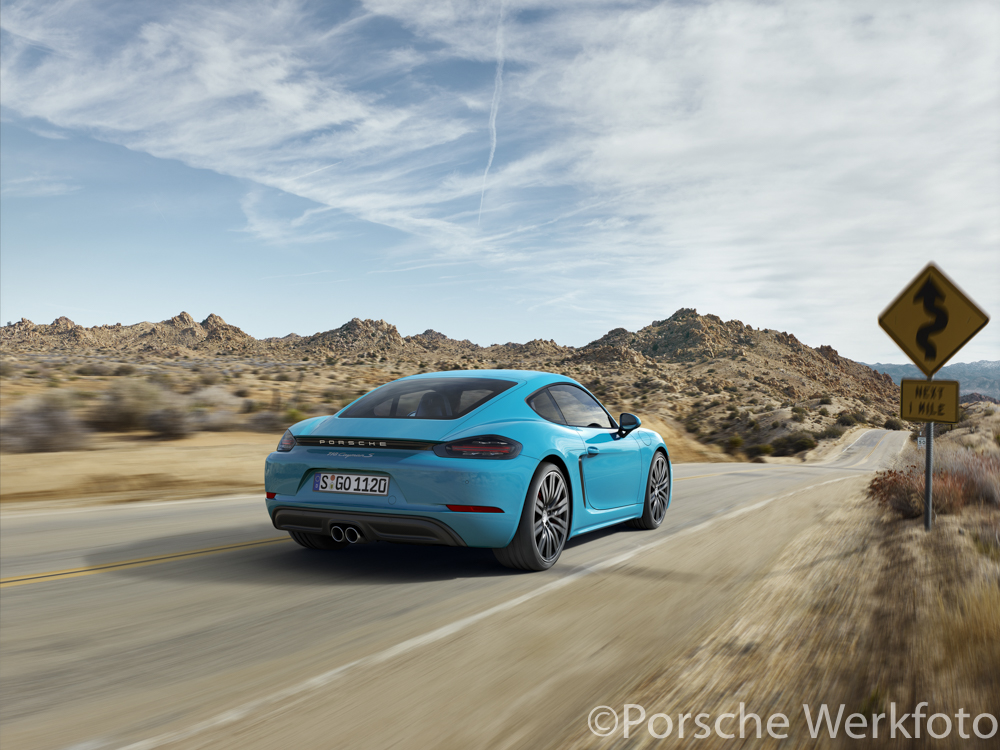
Inside the cabin, the upper part of the dashboard has been comprehensively revised and now sports a new steering wheel in the same style as the 918 Spyder. Porsche Communication Management (PCM) is a standard feature, and mobile phone preparation, audio interfaces and the 150-watt Sound Package Plus are all standard features. The Connect module, available as a PCM option, includes special extensions for smartphones, such as the USB port, Apple CarPlay and Porsche Car Connect. The navigation module with voice control is also available, and drivers can make use of services via their smartphone, via the Porsche Connect App and Porsche Car Connect App.
For the first time, from £39,878 the hard-top Cayman is priced below the soft-top Boxster model. The European market launch for the 718 Cayman and S models begin at the end of September 2016.
Edited by: Glen Smale
Images by: Porsche


